the wind Learn more about the wind
-
Indian Wind stain treatment Coffee Flavor how to introduce the specific process of Wind stain treatment

For the exchange of professional baristas, please follow the coffee workshop (Wechat official account cafe_style) [wheat flavor, tea flavor] India Monsooned Malabar AA | weathered beans (India Monsooned Malabar AA) production area: India Malabar raw bean treatment method: wind stain treatment grade: AA flavor introduction wheat and straw flavor, roasted nuts, dried wood, Nanyang
2017-12-16 India wind stain treatment coffee flavor how specific process introduction professional -
Flavor characteristics of wind-stained coffee in Malabar, India introduction to the treatment process of wind-stained coffee beans

Professional baristas Please follow the Coffee Workshop (official Wechat account cafe_style) when it comes to Asian coffee, most people will first think of Indonesian gold Manning or Toraya, or Vietnamese coffee or Lao coffee, as well as recently rammed up Taiwan coffee, China Yunnan coffee and so on. Indian coffee has a long history, and it is the first coffee grower in Asia.
2017-11-13 India Mara Barr Wind stains Coffee Flavor characteristics Coffee beans treatment process -
Indian monsoon coffee | the history of wind-stained Malaba coffee? How to brew wind-stained coffee? Indian.

Professional coffee knowledge exchange more coffee bean information please follow the coffee workshop (Wechat official account cafe_style) Indian monsoon coffee | the history of wind-stained coffee? How to brew wind-stained coffee? Is the Indian wind-stained coffee good? When it comes to Asian coffee, Taiwanese consumers should be most familiar with the low-acid, mellow Sumatran coffee, or the continuous increase in production in recent years.
2018-09-27 India monsoon coffee wind stains Malaba Rabbah history how to brew professional -
Purple wind chime coffee bean flavor how ancient Ji production area ancient method sun purple wind chime detailed introduction
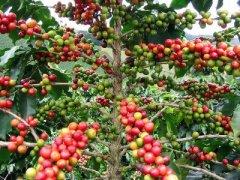
Ethiopia Guji Natural Dasaya G1 Ethiopian Sun-treatment Method Guji Region Tasaya/Purple Wind Chimes G1 Flavor Description: Dry fragrance is rich berry aroma and wine fragrance, sipping at the beginning is a strong strawberry, blueberry accompanied by violet flowers, passion fruit, peach in the middle and later stages
2017-12-24 wind chimes coffee beans flavor how guji appellation ancient method solarization detail introduction -
Characteristics of wind-stained coffee in Malabar, India

For more information on coffee beans, please follow the coffee workshop (official account cafe_style of Wechat). When it comes to Asian coffee, most people will first think of Indonesian gold Manning or Toraya, or Vietnamese coffee or Lao coffee, as well as recently rammed up Taiwan coffee, China Yunnan coffee and so on. Indian coffee has a long history, and it also has a long history.
2018-07-20 India Mara Barr Wind stain Coffee characteristics Specialty knowledge Communication -
What is Indian monsoon coffee? What are the flavor characteristics of Indian-style Malaba coffee?

Professional coffee knowledge exchange more coffee bean information Please follow the coffee workshop (Wechat official account cafe_style) it is said that a long time ago, when raw coffee beans were shipped from India to Europe, changes were caused by high temperatures and moisture in the Indian Ocean, and this is where "wind stains" came from. In addition to the expansion and enlargement of the size of the raw beans after wind-soaked, the color of the raw beans is also changed from green to green.
2019-03-11 What India monsoon coffee wind stains Malaba Rabbah flavor characteristics professional -
Is there any coffee in India? How did Indian style-stained Malaba coffee beans come from? Unique wind stain treatment method

Professional coffee knowledge exchange more coffee bean information please follow the coffee workshop (Wechat official account cafe_style) is there coffee in India? How did Indian style-stained Malaba coffee beans come from? What is the unique wind stain treatment method? Monsoon coffee is also a famous coffee in India. Coffee is placed in an open warehouse by the sea, which is hit by the monsoon, which makes the volume of coffee expand and
2018-09-27 India Coffee Wind stain Malaba Raba Coffee beans how unique treatment Special -
Is there coffee beans grown in India? Indian wind stains Malabar coffee flavor characteristics

Professional coffee knowledge exchange More coffee bean information Please pay attention to coffee workshop (Weixin Official Accounts cafe_style) Front Street-India Wind Stain Malabar Coffee Introduction India Climate The ideal climate conditions for coffee bean growth are temperatures between 2 - 3 and 28 degrees Celsius, rainfall between 1.5 and 2.0 meters, and a dry season of 2-3 months after the rainy season. Cold temperatures near freezing point are not suitable for conditions
2020-04-09 Indian Cultivated Coffee Bean Wind Stain Mara Bar Coffee Flavor Characteristics Specialty -
Do you grow coffee beans in India? India's wind-stained Malabar coffee characteristics, environment and climate

Professional coffee knowledge exchange more coffee bean information please follow coffee workshop (Wechat official account cafe_style) India's main coffee-growing areas India's coffee industry is currently dominated by southern India, Karnataka, Kerala and Tamil Nadu together account for more than 90% of the country's coffee production; at present, about 250000 people in India grow coffee beans, and
2019-01-17 India planting coffee beans wind stains Mara Barr coffee characteristics environment climate -
Introduction of Indian style Malaba Flavor detailed introduction of Wind stain treatment and its effect on Coffee Bean
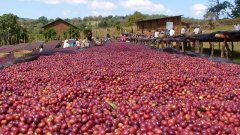
Parwati Coffee (Wind-stained Malaba) the most famous beans in India are Monsooned Malabar and Mysore Nuggets Extra Bold, which means monsoon, so it is also known as monsoon Malaba. In the past, raw coffee beans from India were all exported to Europe, raw in the process of shipping.
2017-11-24 India Wind stains Malaba Rabbah Flavor introduction treatment detail Coffee beans Shadow -
Indian Coffee Brand | Calendar of Indian monsoon coffee [wind-stained Malaba Monsoon Malabar]
![Indian Coffee Brand | Calendar of Indian monsoon coffee [wind-stained Malaba Monsoon Malabar]](https://world.gafei.com/uploads/allimg/180927/14-1P92G40422410-lp.jpg)
Professional coffee knowledge exchange more coffee bean information please follow the coffee workshop (Wechat official account cafe_style) Indian coffee brand | Indian monsoon coffee [wind-stained Malaba Monsoon Malabar] history? How to cook it properly? The so-called monsoon Malaba, as its name implies, is actually blown out by the wind. It is said that there would have been this strange thing that is now popular in Europe at the beginning.
2018-09-27 India Coffee Brand Monsoon Wind stain Malaba Rabbah -
Flavor characteristics of Indian Monsooned Wind-stained Coffee the Origin Story of Indian Wind-stained Coffee

Professional coffee knowledge exchange more coffee bean information please follow the coffee workshop (Wechat official account cafe_style) Indian Coffee style Coffee: the history of coffee cultivation in India, according to the story is that Islamic pilgrim Baba Budan first brought coffee seedlings out of the Arab world in 1650 and planted them in Chickmagalur (located in Karnataka district) in South India.
2018-07-22 India Monsooned Wind stain Coffee producing area Flavor characteristic Origin -
Introduction to the flavor characteristics of Indian coffee brand Monsooned Malabar wind-stained Malaba coffee story

Professional coffee knowledge exchange more coffee bean information Please pay attention to the coffee workshop (Wechat official account cafe_style) there are few Indian coffee brands, usually only two: wind-stained Malaba and Masojin bricks. The raw beans of the wind-stained Malaba are dry, yellow and sweet, but a bit monotonous because they are shipped after being placed in a ventilated warehouse to be caressed by the Indian Ocean monsoon for several seasons.
2018-07-26 India Coffee Brand Monsooned Malabar Wind stains -
How did the Indian wind stain treatment come from? What are the characteristics of Malaba coffee?

Professional coffee knowledge exchange more coffee bean information Please follow the coffee workshop (Wechat official account cafe_style) it is said that a long time ago, when raw coffee beans were shipped from India to Europe, changes were caused by high temperatures and moisture in the Indian Ocean, and this is where "wind stains" came from. In addition to the expansion and enlargement of the size of the raw beans after wind-soaked, the color of the raw beans is also changed from green to green.
2018-10-09 India wind stains treatment how Malaba Rabbah coffee what characteristics professional -
Guide to the baking curve of Malaba Coffee description of the taste and flavor of Malaba coffee by different treatments

Professional coffee knowledge exchange more coffee bean information Please pay attention to the coffee workshop (Wechat official account cafe_style) the wind-stained coffee needs to be made with sun-soaked beans, all the factories dealing with wind-stained coffee face to the west to welcome the salty and wet monsoon blowing from the southwest sea, the coffee beans are spread flat in the wind-soaked field, the windows are all open, and then enter the bag after the wind stains to a certain extent, but because of passing.
2019-04-02 Malaba Raba Coffee Baking Curves guidelines differences treatments Taste Flavor -
Sidamo Gucci tanning Tasha purple bluebell hand powder is better than recommended _ purple windbell coffee
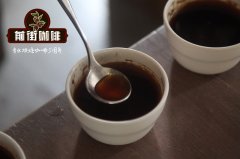
Professional coffee knowledge exchange more coffee bean information please follow Coffee Workshop (Wechat official account cafe_style) Sidamo Coffee-Gujitasha Purple Wind Bells G1 Sun Ethiopia ETHIOPIA Sidamo Guci Sauvignon Tasha Asia Purple Wind chimes Sidamo Guji Shakisso Dasaya Natural G1 Mango, Berry, Grape Juice already have Honey Kiss in front, about
2018-10-30 Dharma Gucci tanning tower Shaya wind chimes hand flushing powder recommendation coffee how -
Introduction to the flavor and taste of coffee bean production area of Ethiopian water washing Guji water wind chime G1

Professional coffee knowledge exchange more coffee bean information please follow the coffee workshop (Wechat official account cafe_style) Ethiopia washed Gucci water wind chimes G1 19gam01 batches (2019 new season) Ethiopia Guji Washed Bishala G1 19prime 01 batches (2019 new season) (30KG colorful small sacks with plastic inner bags) country Ethiopia (Ethiopia)
2019-05-19 Ethiopia washing auspicious water wind chimes coffee beans producing areas flavor taste introduction -
Indian coffee beans need three to four months of wind soaking, green beans will increase by 2-3 times

Professional coffee knowledge exchange More coffee bean information Please pay attention to coffee workshop (Weixin Official Accounts cafe_style) In fact, India is a country rich in coffee beans. About 250,000 people grow this economic product nationwide. Coffee is suitable for growing in a warm environment. The Tropic of Cancer between North and South is called coffee zone. However, it is afraid that high temperature will damage the characteristics of beans, so most of them are planted in
2019-03-19 indian coffee beans needs after four months wind stains green beans increase 2 -
Indian Malabar style-stained coffee describes in detail how to maintain the effect of production methods on flavor.
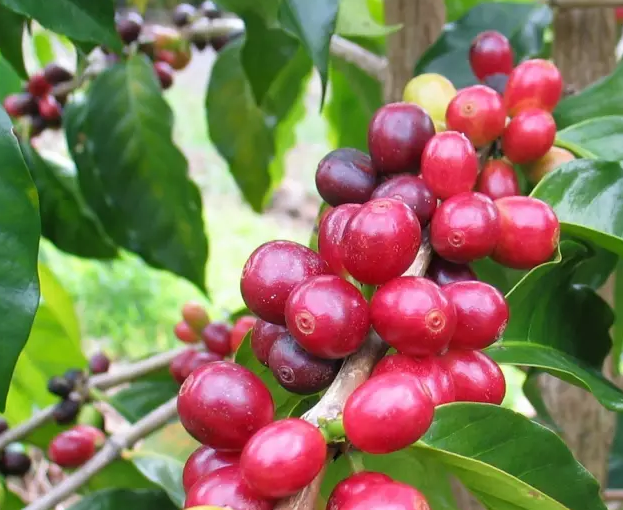
When it comes to Asian coffee, most people will first think of Indonesian gold Manning and Toraya, or Vietnamese coffee or Liaoguo coffee, as well as recently developed coffee from Taiwan and Yunnan in China. Indian coffee has a long history, and it is also the first country in Asia to grow coffee. It has always had a place in the coffee world.
2017-11-25 India Mara Barr Wind stain Coffee details introduction production method how Bao -
Indian monsoon Malaba coffee bean planting processing variety information introduction how to make wind-stained coffee?
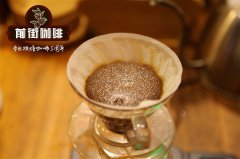
Professional coffee knowledge exchange more information about coffee beans Please pay attention to the coffee workshop (official Wechat account cafe_style) Coffee has become the first drink in the world only 1600 years later, so the recorded history of coffee is only 400 years similar to that of Taiwan. It is generally recognized that Africa is the home of coffee, originated in Ethiopia and spread to the world from the port of Mocha in Yemen.
2018-07-22 India monsoon Malaba Rabbah coffee beans planting processing varieties information introduction
